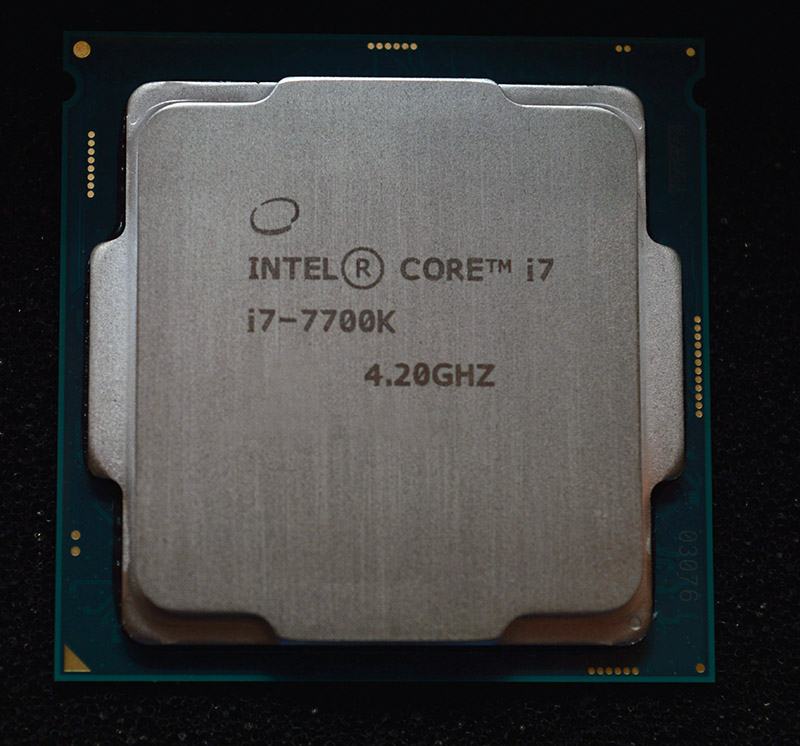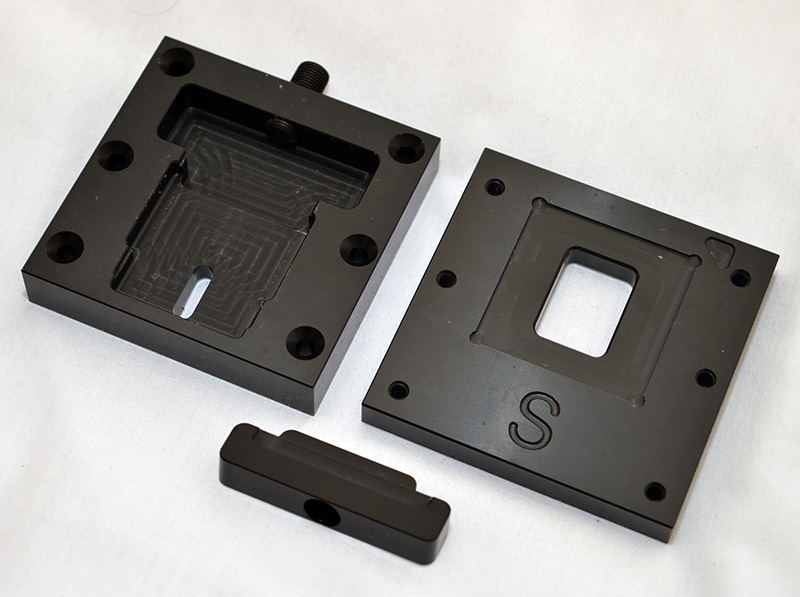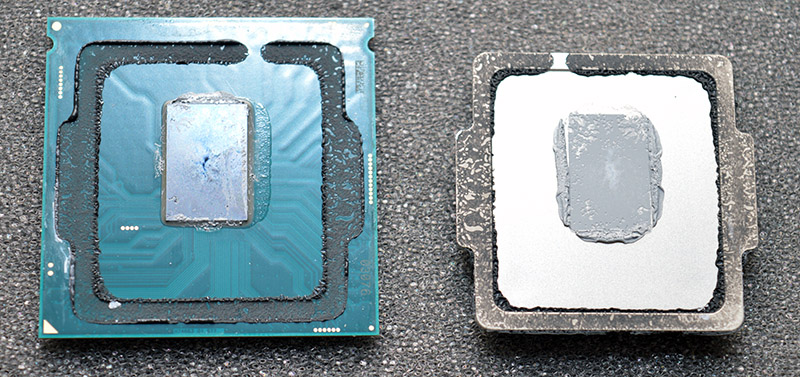Intel Core i7-7700K Kaby Lake Delidding Analysis
John Williamson / 8 years ago
Installation and Delidding Process

Delidding is the process of removing the IHS to re-apply a better form of thermal interface material. Traditionally, this arduous task meant you had to gently pry between the IHS and adhesive at four corners with a pen knife. Unfortunately, it’s not a foolproof process you can inadvertently damage the PCB or die itself as the knife cuts inwards. Another option is the Vice method which involves holding the CPU security in place while dislodging the IHS with a hammer. If you adopt a patient approach, the likelihood of failure is slim but it’s more convenient to use the Delid Die Mate tool. This ingenious device contains perfectly carved cut-outs to delid a Skylake or Haswell/Devil’s Canyon processor.
So how do you delid the CPU?
Firstly, you need to uncouple eight screws with a hex key which separates the two interjoining pieces. Then, loosen the main hex screw before gently placing the CPU in the correct socket with the processor’s triangle matching the triangle on the Delid Die Mate tool.

Once complete, pick up the adjoining piece and make sure the horizontal plastic bit is aligned in its cavity. This is important because the piece pushes against the IHS and moved forward by the main screw’s pressure. Please note, the plastic insert is loose until you screw together the top and bottom. Therefore, you need to press it down with your finger and carefully line-up everything before re-attaching the 8 screws. After this step is done, turn the large hex screw until you hear a snap which indicates the IHS has been displaced. This doesn’t always happen but there is a viewable window to inspect the IHS during the process. Depending on the processor, the amount of force needed can be pretty substantial due to the strong adhesive. Now that the IHS has been successfully pushed off, simply loosen the main hex screw and the eight screws holding the two pieces together. The IHS should slide off the CPU’s die without any effort being required.

Of course, we still need to remove the stock thermal compound and apply an alternative. The next step is to wipe off the remaining thermal paste with a microfibre cloth and do the same to the IHS. Then, you’ll want to remove the silicon glue surrounding the CPU’s PCB and IHS. Honestly, the IHS cannot be damaged so a flat knife will be able to scrape away the adhesive in a quick manner. It’s not necessary to remove the inside silicon glue so this should save you some time. However, do not under any circumstances remove the CPU’s adhesive via the same procedure. I’ve found the best policy is to use a fingernail and gently scrape away the residue. This might seem a little daunting at first but it offers the best control and the PCB is unlikely to be damaged by the pressure. Also, the end-result doesn’t have to be perfect, just work on the corners.
After this has been done, clean up the IHS and CPU die with isopropyl alcohol. The higher IPA rating the better and I’d recommend using 99.9% proof. Dab a small amount of alcohol onto a microfibre cloth and remove the paste in a circular motion. Then, you’ll want to apply some new thermal paste and it’s vital to select the correct one. Honestly, I’ve tested liquid metal compounds versus other pastes and the difference is striking. The Thermal Grizzly Conductonaut TIM is probably the best option and comes with alcohol swabs and cotton buds to spread the compound. Apply a pea-sized amount of thermal paste on the CPU die and heatsink area which comes into contact with the CPU. Gently brush the compound until it neatly covers the entire die. You can employ a more liberal attitude with the IHS because it doesn’t need to be that precise. Finally, you need to re-attach the IHS to the CPU’s PCB with a silicon glue. In theory, you could use another type of glue but it has to be able to contend with thermal expansion. The UHU high-temperate sealant is a great choice but it’s a little on the pricey side. Place the glue around the CPU’s PCB and spread it using something blunt which can’t cause any damage.

Once you’ve done that, insert the CPU into the Delid Die Mate’s mould, re-attach all the screws in a similar vein as before and wait for the glue to set as its sealed in tight. This should be complete in around 45-60 minutes. The only temporary option is to jerry-rig the IHS over the die and hold it down using a motherboard’s retention arm. This is useful to check the CPU is functioning and survived the delid process.



















